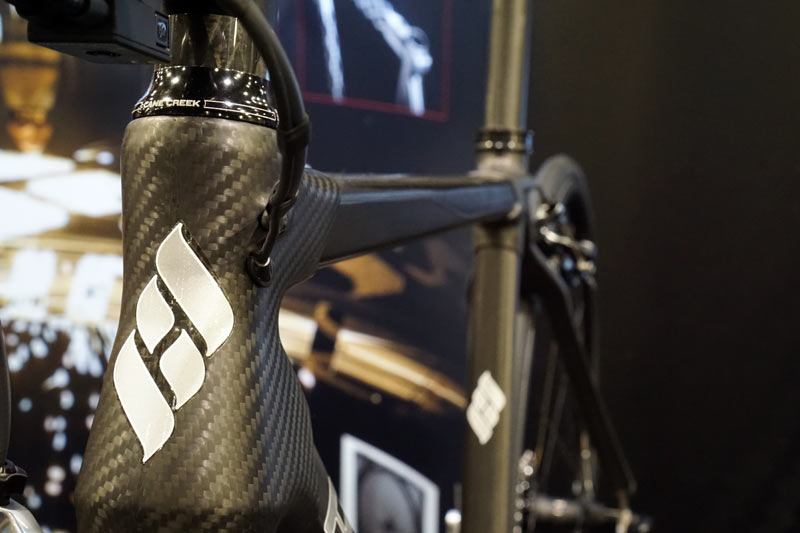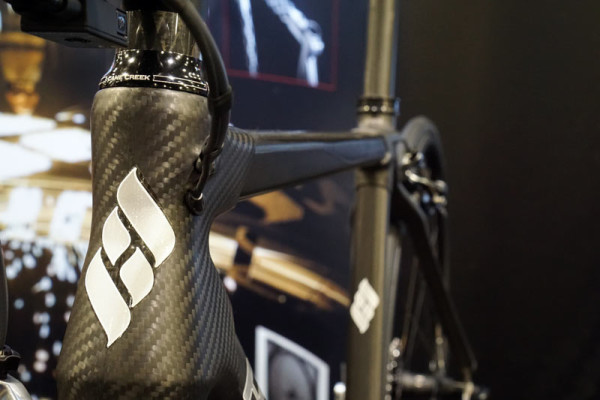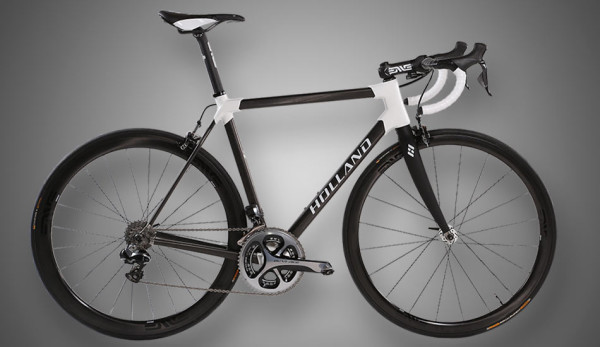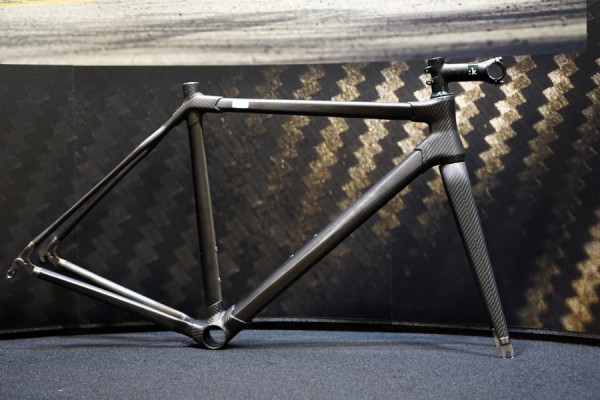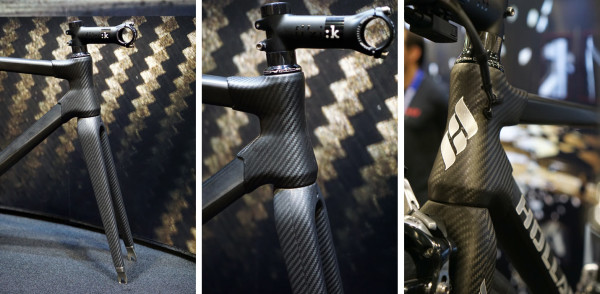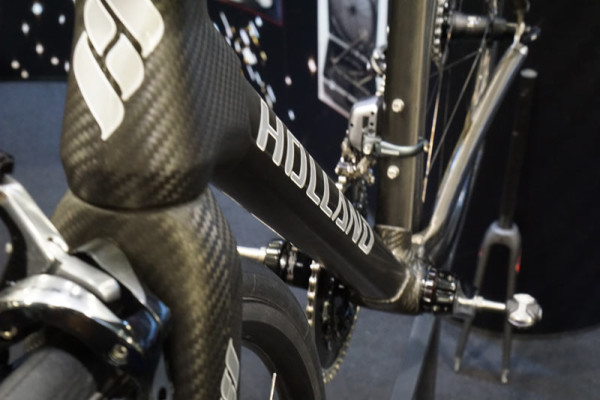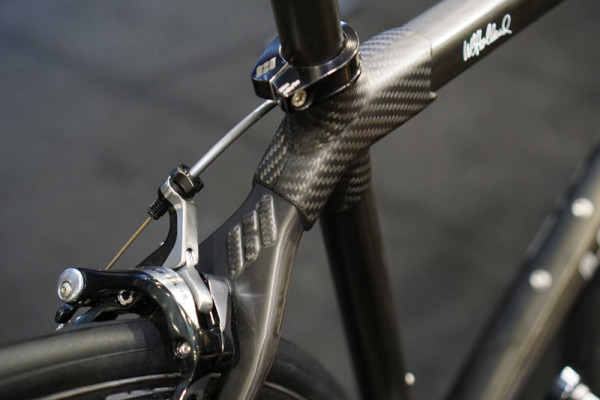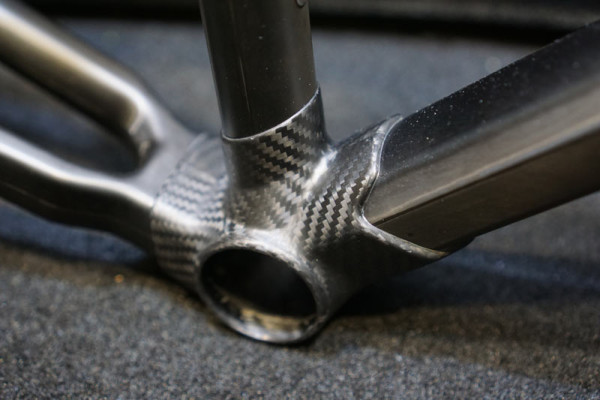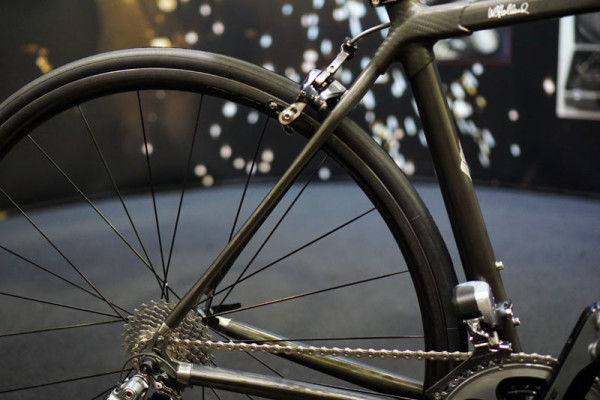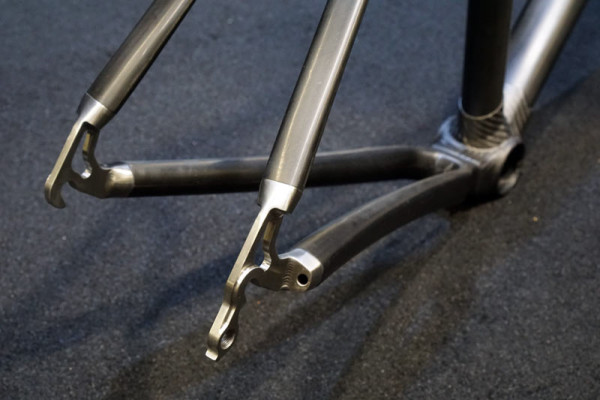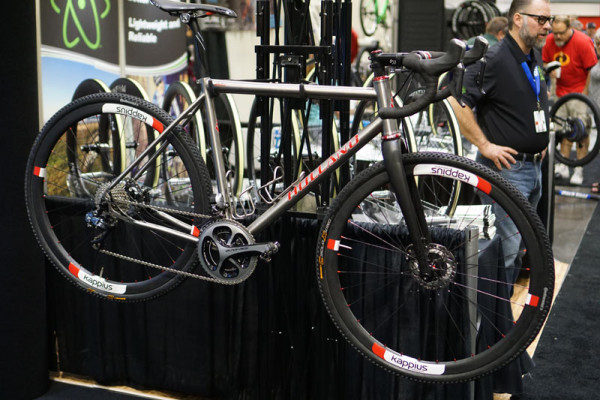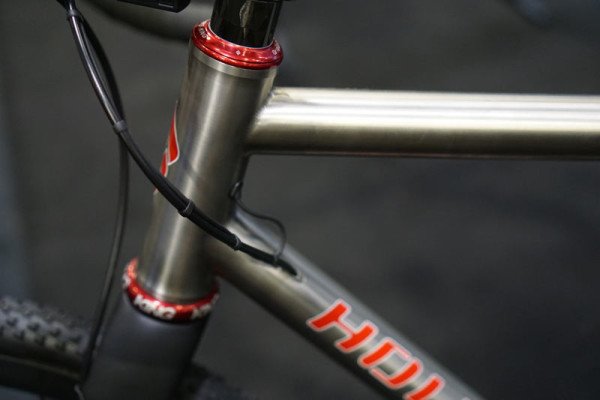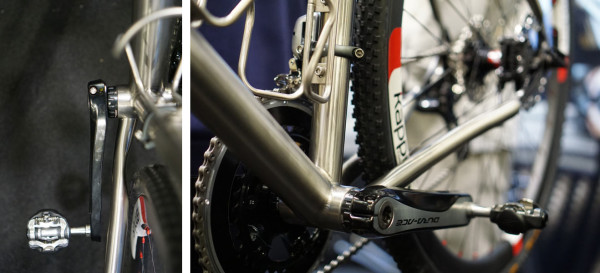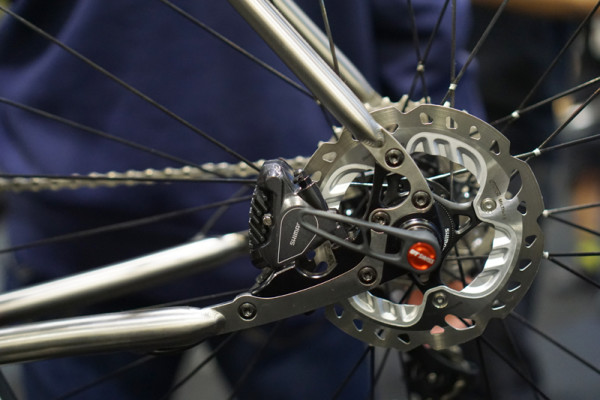Holland’s HC carbon lugged road bike has been a two year project spanning six prototypes to get to this point. Now, it’s in production and is a full custom road bike that’s 100% made in house, including the fork.
Working with founder Bill Holland, Mike Lopez produced the carbon fiber components and was the founder or Reynolds Composites. He also created this fork and was responsible for much of the carbon work for the Serotta forks and tubes.
Why lugged? Several reasons, first of which was because their concept was to design something they had complete control over the angles and build. Normally, this would mean tube to tube construction since each lug requires a mold, and you can’t realistically have an infinite number of molds to create every conceivable angle. Here’s how they did it…
They have a set of lugs for each part, all within 1.5° of the next lug where they would need to be adjusted. On the inside of each lug’s insertion point is extra carbon material that’s simply padding, not structural. To get the exact angle they need for a full custom frame, they simply machine away part of the padding so the tube sits inside at the angle they want. Then they’re bonded together.
Constrained Layer Damping is the other reason for lugs, which means the bonding agent between lug and tube acts as a vibration damper between them, so vibrations won’t travel all through the frame.
The top and down tube transition their angles from front to back, which is subtle but adds visual interest as the light hits it. It’s laid up with the parting line for the molds on the sides of the tubes, which puts the overlapping material on the sides of the tube rather than top and bottom. That makes it laterally stiffer while giving a bit of vertical flex. It also makes it less prone to damage if the handlebar swings around and smacks it.
They use full UD (unidirectional) carbon tubes and woven lugs, but they could do a top cosmetic layer of either on any part of the bike if someone wanted.
Top and seat tubes taper thinner where they meet at the seat tube, which combines with the flat seat stays to allow a big of articulation at that joint, which helps smooth the ride, particularly when seated. As they say, it’s a Ferrari that rides like a Lexus.
Note the heavy shaping of the chainstay, too. These pics don’t do it justice, this is a gorgeous bike.
The fork’s dropout boss is bonded into the fork during construction, then the actual dropout part is welded on afterward, letting them adjust the rake anywhere from 40 to 50 mm.
The fork has a claimed weight of ~415g and can have a custom layup just like the bike. Which was the whole point, giving them the ability to completely customize the fork’s rake, angle, tune and everything else. Because a 150lb rider doesn’t need the same fork a 210lb rider does.
The titanium parts come from Paragon Machine Works, and everything else is made at Holland’s San Diego facility, possibly making this the only U.S. made production carbon fork. And, thanks to Mike Lopez’s Reynolds fork experience from Mike gets all the necessary impact and safety testing.
This bike, as built with Di2, would be about $17,200, and is headed for a customer. Retail is $6,400 for the frame, and $700 for the fork with ti dropouts. Each one takes about 50 hours to build.
Holland’s titanium cyclocross bike gets a few updates, too.
Cleaner internal routing…
…bigger tire clearance…
…and flat mount brake dropouts with thru axle compatibility as an option. The modular design of the frame lets them fit a variety of dropouts into place to suit the customer.
